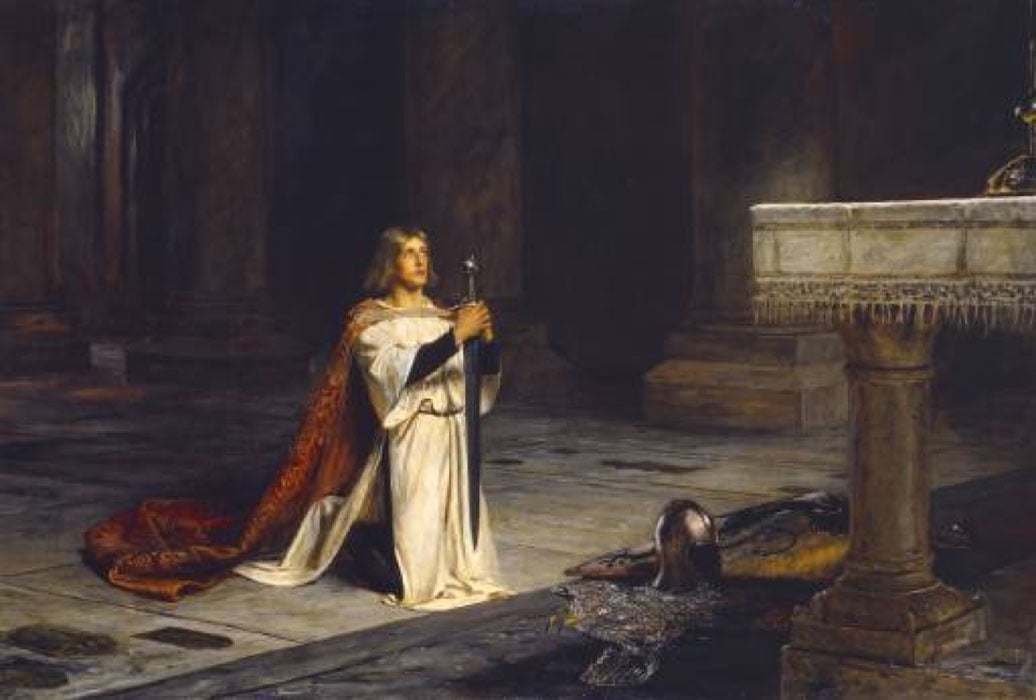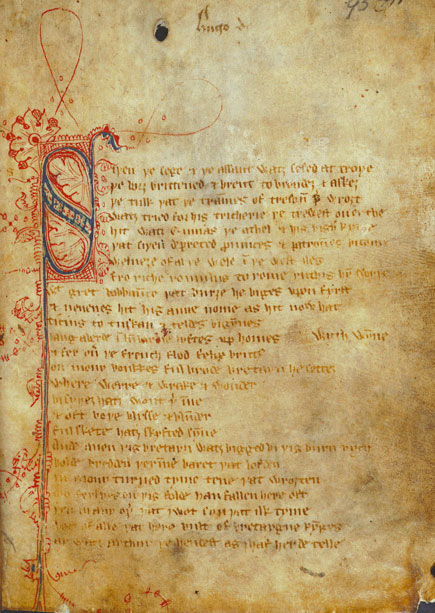
Sir Gawain and the Green Knight: Landscapes, Symbols and Metaphysics in 14th-Century England
‘The paths he would take were strange,
With little cheer to glean,
And his hopes would often change
Till that chapel could be seen.’
Sir Gawain and Green Knight is a late 14th-century poem, set in an Arthurian world of the past, but which invokes the chivalric codes and environment of the time it was written. Despite numerous attempts to identify the author, it remains anonymous, although the Middle-English dialect used in the poem has been pinned down to the north-west Midlands of England, perhaps the county of Staffordshire. It is written in alliterative verse, suggesting that it was designed to be read aloud, with the alliteration acting as both a memory aid to recitation and as a prop to convey the humorous intonations, which run throughout the poem. It is generally seen as one of the most important examples of English medieval literature and fits within the corpus of Arthurian stories known as ‘The Matter of Britain’.
It certainly adheres to the usual frames of reference that medieval authors used when describing the Arthurian world, where a supernatural Otherworld was consistently interacting with physical reality, and symbolic layers of meaning provide an allegoric purpose that would have been recognized by the elite classes listening to, or reading the stories. Many of the characters in the poem are familiar from other Arthurian sources, but as the title suggests, the main protagonist is Sir Gawain, nephew of King Arthur.

"Sir Gawain and the Green Knight", from the Cotton Nero A.x manuscript (Public Domain)
His adventures tell us much about 14th-century society, but also about a metaphysical belief system operating below the radar of Christianity, which, as usual with later medieval Arthurian literature, invokes an older, pagan atmosphere, perhaps more redolent of the immediate post-Roman Dark Ages, when the stories are ostensibly set. The use of such magico-folklore in the Arthurian stories can tell us much about the continuity of pre-Christian beliefs throughout the Middle Ages, and the motifs used consistently through Sir Gawain and the Green Knight retain a timeless folkloric quality, making the poem a commentary on humanity’s interaction with supra-natural dimensions that still manages to resonate with the 21st-century reader.
The Plot and Landscape of the Poem
The action begins on New Year’s Day at Arthur’s court of Camelot, where feasting is in progress. Much Arthurian literature uses the device of Camelot as representative of a golden age in the past, often making derogatory (even satirical) comparisons to contemporary aristocratic courts. This is especially true of several stories from the Welsh cycle of stories known as The Mabinogion (also composed in the 14th century, although containing much earlier material) and the Gawain poet follows this trope, ensuring the reader is aware that Arthur’s court exemplified the pinnacle of chivalric code. But this standard description becomes turned around upon the arrival of the mysterious giant knight, who makes his abrupt entrance into the midst of the feast mounted on a horse. His apparel, his skin and even his horse are green:




